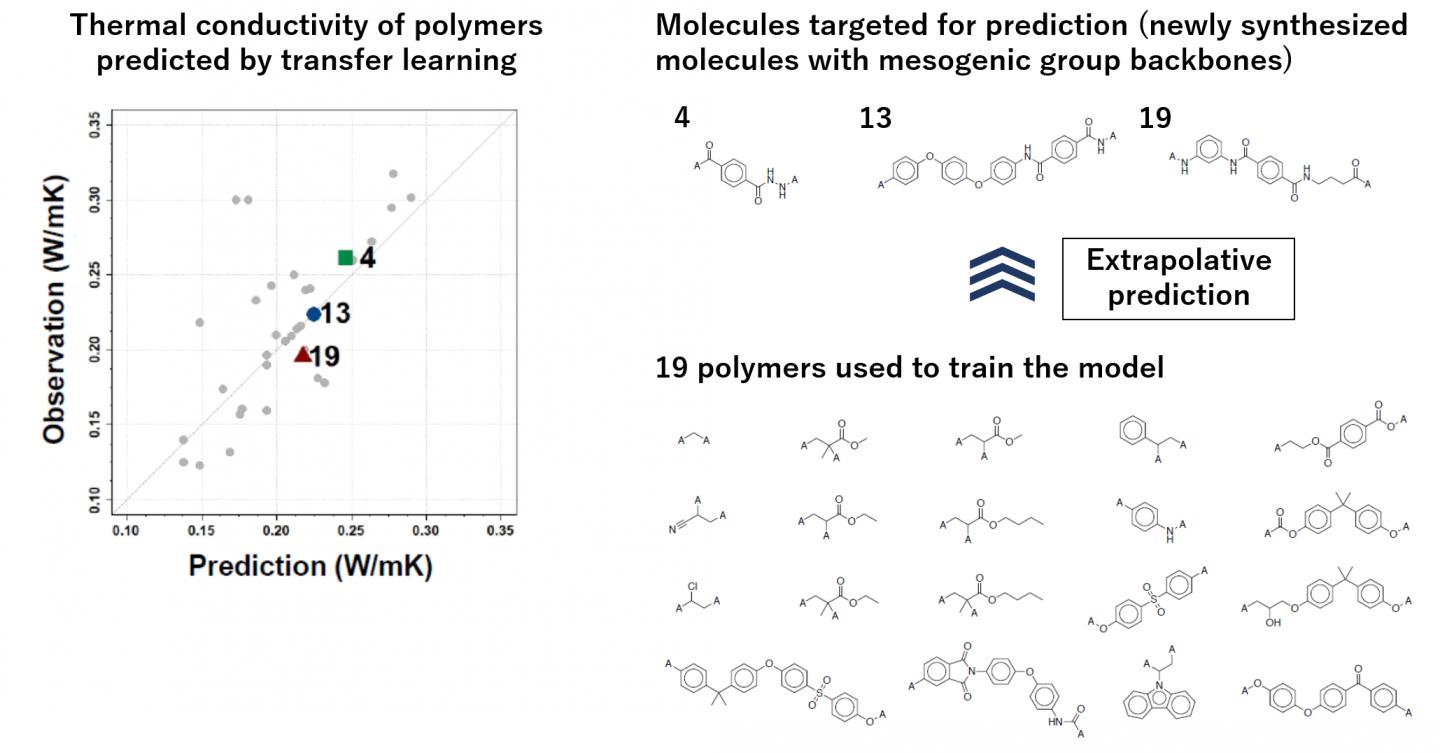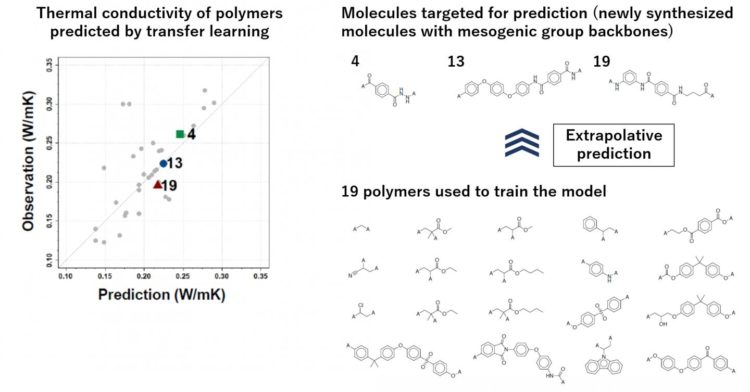Transfer learning may serve as a solution to the scarcity of materials property data

Credit: Ryo Yoshida
A joint research group consisting of the Institute of Statistical Mathematics (ISM) and the National Institute for Materials Science (NIMS) has developed approximately 140,000 machine learning models capable of predicting 45 different types of physical properties in small molecules, polymers and inorganic materials. The joint group then made XenonPy.MDL – a pre-trained model library – publicly available.
XenonPy – an open source platform for materials informatics (MI) research – was jointly developed by NIMS and a team at the ISM Data Science Center for Creative Design and Manufacturing (Chang Liu (Project Assistant Professor), Yoh Noguchi (Project Researcher), Stephen Wu (Assistant Professor), Hironao Yamada (Project Researcher) and Ryo Yoshida (Center Director)).
XenonPy uses machine learning algorithms to perform various tasks of MI. Users of XenonPy can run the pre-trained models available in the XenonPy.MDL library via the application programming interface (API) and use them to construct a variety of materials design workflows. The joint group recently reported the release of XenonPy.MDL in a research article published in ACS Central Science, a journal of the American Chemical Society.
In addition, as described in the article, the group succeeded in demonstrating the great potential of transfer learning to overcome the problem of limited amounts of materials data in various tasks of MI (i.e., predicting the physical properties of small molecules, polymers and inorganic crystalline materials using exceedingly limited materials data).
###
This research project was supported in part by the JST “Materials Research by Information Integration” Initiative (MI2I) and was conducted at NIMS between FY2015 and FY2019.
Media Contact
URA Station Planning Unit
[email protected]
Related Journal Article
http://dx.





